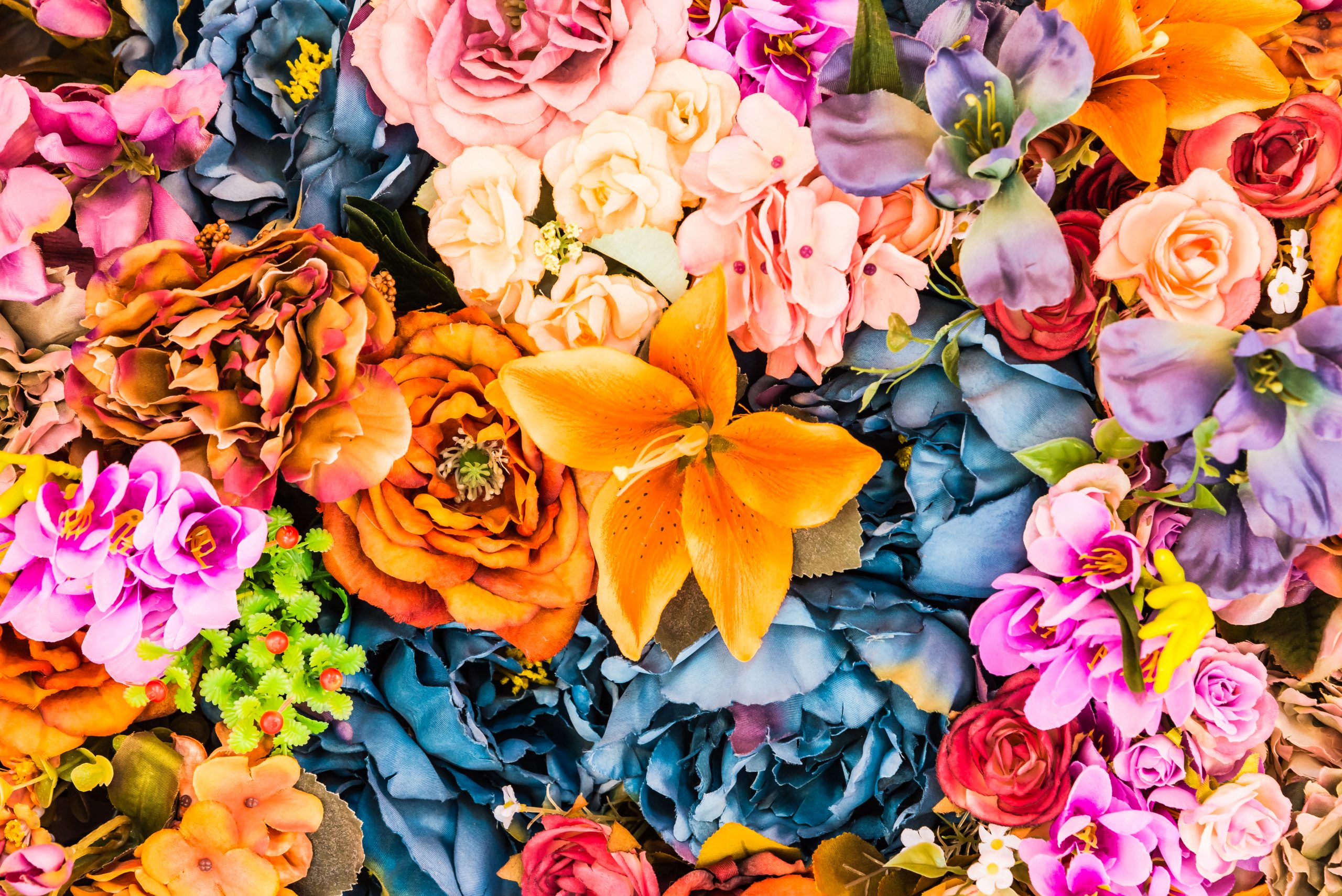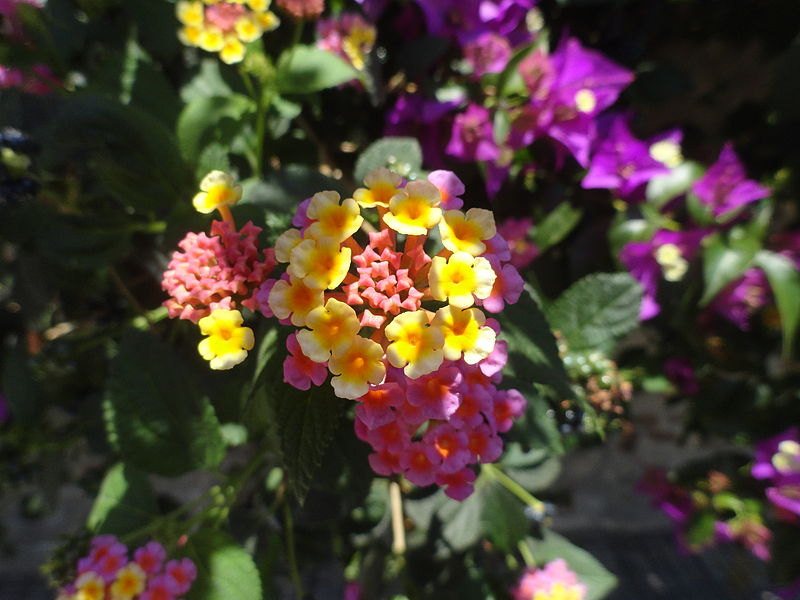Why Do Flowers Appear Blue to Our Eyes
How Flowers Get Their Color

![]()
![]()
![]()
![]()
How do flowers get their colors? Why are roses red and violets blue? People always admire the beautiful colors of flowers in bloom but rarely does anyone know the perfect science that goes into the color production of one of the earth's greatest natural beauties. The reason a flower has color is the same reason a person may be born with brown or blond hair, possess blue or green eyes, dress in colorful clothing or wear red lipstick.
Shop Best Selling Flowers
Fiesta Bouquet
$60 - $95
Shipped in a Gift Box
The Fiesta Bouquet is composed of a lively mix, fit to celebrate any and every moment. With a combination of vibrant flowers, this florist–designed arrangement brings a pop of color and a burst of excitement as soon as it arrives.
Please Note: The bouquet pictured reflects our original design for this product. While we always try to follow the color palette, we may replace stems to deliver the freshest bouquet possible, and we may sometimes need to use a different vase.
Light of My Life Bouquet
$50 - $80
Shipped in a Gift Box
The Light of My Life Bouquet blossoms with brilliant color and a sweet sophistication to create the perfect impression! Pink Lilies make the eyes dance across the unique design of this flower bouquet, surrounded by the blushing colors of orange roses, lavender cushion poms, hot pink carnations, and lush greens. Presented in a clear glass vase, this fresh flower arrangement has been created just for you to help you send your sweetest thank you, happy anniversary, or thinking of you wishes.
Please Note: The bouquet pictured reflects our original design for this product. While we always try to follow the color palette, we may replace stems to deliver the freshest bouquet possible, and we may sometimes need to use a different vase.
Beyond Blue Bouquet
$55 - $92
Shipped in a Gift Box
There is something about the shade of blue that brings a sense of calmness and serenity. Our Beyond Blue bouquet is designed with billowing white blooms and pops of bold florals to deliver just the right sentiment for any reason.
Please Note: The bouquet pictured reflects our original design for this product. While we always try to follow the color palette, we may replace stems to deliver the freshest bouquet possible, and we may sometimes need to use a different vase.
Color, when you boil it down to the simplest terms, exists solely to reproduce and procreate – in plants and in humans. The Color Making Process The color of flowers, such as the red in roses and yellow in marigolds, are found in pigments that are decided upon in the hereditary genome of the plant. Flower colors of red, pink, blue and purple come mainly from the pigments called anthocyanins, which are in the class of chemicals called flavanoids (what gives plants their color). Other pigments are carotenoids, found in tomatoes and carrots, that provide yellow, red and orange in the plastids. Chlorophyll is the most well known pigment, providing all that green you see in leaves and foliage. All these scientific terms really mean that, similar to people, plants carry certain pigments in their genes that decide before they are "born" what color they will be.
Why Flowers Have Color
Let's talk about the birds and the bees… literally. Flowers that are bright in color are meant to attract birds, bees and other insects in order to help the plants reproduce. Bright colors or dull colors are fixed in the genetics of a flower. If a plant needs to reproduce with the help of the birds and the bees – the genetics will make the flowers have bright colors to attract the animals (think putting on makeup and doing hair to attract a mate). In addition, if the pollination and reproduction are made this way, the fruits of the plant will be sweet and pleasant tasting. If reproduction through pollination is done by way of wind and air – the pigments of the plant will be inconspicuous and dull with bad tasting fruit. If the plant calls for pollination, the bright flower and sweet pollen will coax birds, bees and insects to land on it. As these animals eat the sugar or honey, some of the pollen with stick to their feet. When they land on another flower some of that pollen will spread and voila! Pollination occurs. If a flower's anthocyanins did not position the genetic groundwork for brightly colored plants then none of this would be possible.
Playing with the Genetics of Flowers – Is it Possible?
One might ponder the question, if you know what pigments and chemicals create the colors in flowers, can you alter the pigments to create new colors? The answer is yes but it may be hard for just anyone to do this. Just ask Robert Griesbach, a research plant geneticist at the ARS Floral and Nursery Plants Unit, located in Beltsville, Maryland. He has figured out a way to turn roses a bright blue. The trick is extracting just the right amount of one pigment and implanting it in another to create a recipe for an entirely new color. The change of red roses to blue roses is just the beginning. By extracting certain genes from plants, the future of plant color could be a wide variety of fabulous colors. Another way to change the color of a flower petal on a much smaller scale is to change the PH level of the anthocyanins An easy experiment you can conduct yourself is to crush a red rose petal on a white plate with the back of a spoon or spatula and add either vinegar or baking soda and note the color change.

Conclusion
Imagine getting a bouquet of royal blue roses or growing green sunflowers in your yard. Possible? Yes. Plausible for the public to pursue? Perhaps it's best to leave that up to the scientists. Whether you are adamant about enjoying the natural colors of flowers or can't wait to see what blooms science has to offer, next time you venture out into the garden or pick up a bouquet of fresh blossoms, think about the perfection that goes into making these sweet smelling beauties. Perhaps you will have a better understanding of how similar we are to everything else that grows on this earth.
![]()
![]()
![]()
![]()
Source: https://www.proflowers.com/blog/how-flowers-get-their-color
0 Response to "Why Do Flowers Appear Blue to Our Eyes"
Post a Comment